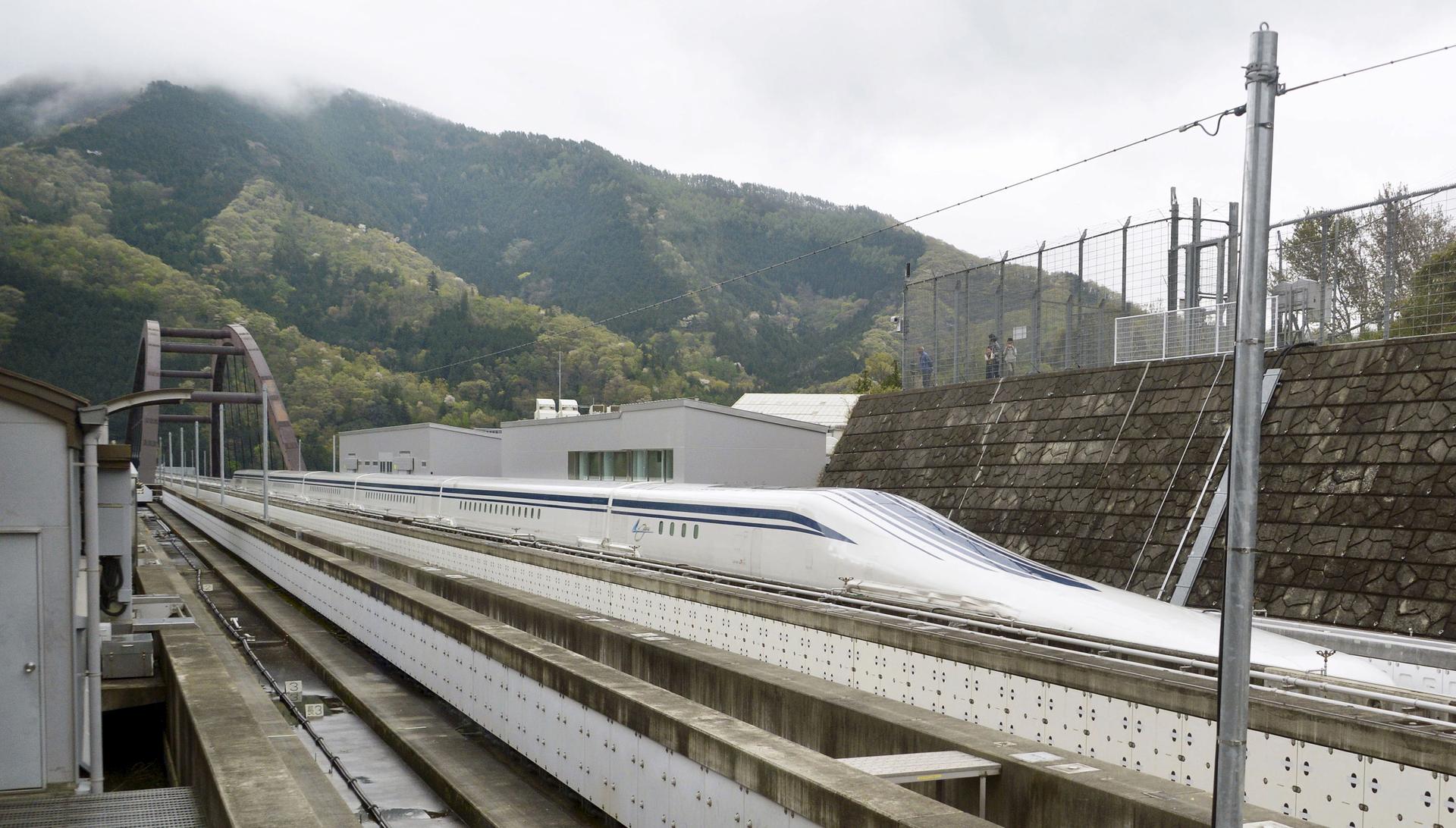A magnetically levitating (maglev) train operated by Central Japan Railway
Who doesn’t love riding a train? But if you live in the US it’s easy to be jealous of countries like Japan where bullet trains go 200 miles per hour and maglev (magnetically levitating) trains go even faster.
Here in the US, you can get up to 150 mph on Amtrak’s Acela in the Northeast, but only for short stretches because of the state of the tracks. Harvard Business School professor Rosabeth Moss Kanter points all this out in her book “MOVE: Putting America’s Infrastructure Back in the Lead.”
After WWII, Japan “rebuilt and they built modern shiny things; we’re still using rail infrastructure that dates back to the 19th century,” Kanter says. It's not just Japan either. France, Germany and China all have high-speed trains for Americans to envy. In contrast, the US poured money into its interstate highway system after the war, not railroads.
America's underinvestment in railroads is leading to safety problems and service failures that affect everything from the economy to public health to overall quality of life. Just look at what happened in Boston last winter when a series of blizzards brought the public transit system to a standstill.
"We need to repair, renew and reinvent," Kanter says. And get Americans out of their cars.
“Rail is energy-efficient, people want it, it's also convenient," she says. “We have to get more people off the roads because the costs of congestion are enormous. We lose on average a week of productivity per American per year just being stuck in traffic.”
Kanter doesn’t claim to have all the answers but she does think it’s instructive to compare America's passenger rail networks to its freight rail system, which she calls a model for the rest of the world. According to Kanter, freight rail is efficient, getting greener, and turns a profit. Unlike Amtrak, which can’t make long-term capital decisions because it gets its appropriations from Congress, private freight companies like CSX can pay for infrastructure improvements when and where they want them. She hopes similar public-private partnerships can happen in passenger rail, spurring new terminals, tunnels and other connections.
Beyond piecemeal improvements though, Kanter thinks government planning and subsidies are probably essential to building a passenger rail system to rival countries in Europe and Asia.
"The difference in other countries is they do have national plans and national visions and they’re not spending all their time talking about ‘We can’t raise taxes.’"
"We can feel a little ashamed and embarassed in our country that was once at the top of the world," Kanter says. "We should want to be the model for the world again and not a country that lags behind. That's why I'd like the presidential candidates to talk about this."
